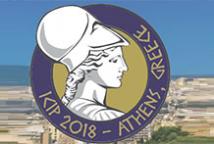
The International Conference on Image Processing (ICIP), sponsored by the IEEE Signal Processing Society, is the premier forum for the presentation of technological advances and research results in the fields of theoretical, experimental, and applied image and video processing. ICIP has been held annually since 1994, brings together leading engineers and scientists in image and video processing from around the world. Visit website.

- Read more about Multimodal Image Registration through Simultaneous Segmentation
- Log in to post comments
Multimodal image registration facilitates the combination of complementary information from images acquired with different modalities. Most existing methods require computation of the joint histogram of the images, while some perform joint segmentation and registration in alternate iterations. In this work, we introduce a new non-information-theoretical method for pairwise multimodal image registration, in which the error of segmentation – using both images – is considered as the registration cost function.
- Categories:
 5 Views
5 Views
- Read more about KEY JOINTS SELECTION AND SPATIOTEMPORAL MINING FOR SKELETON-BASEDACTION RECOGNITION
- Log in to post comments
- Categories:
 10 Views
10 Views
- Read more about MOSAICING OF IMAGES WITH FEW TEXTURES AND STRONG ILLUMINATION CHANGES: APPLICATION TO GASTROSCOPIC SCENES
- Log in to post comments
- Categories:
 4 Views
4 Views
We propose a nonrigid registration method whose motion estimation is cast into a feature matching problem under the Log-Demons framework using Graph Wavelets. We investigate the Spectral Graph Wavelets (SGWs) to capture the shape features of the images. The SGWs are more adapted to learn the spatial and geometric organization of data with complex structures than the classical wavelets. Our experiments on T1 brain images and endomicroscopic images show that this method outperforms the existing nonrigid image registration techniques (i.e.
- Categories:
 12 Views
12 Views
- Read more about CONSTANT QUALITY CONTROL BASED ON TEMPORAL DISTORTION BACKPROPAGATION IN HEVC
- Log in to post comments
CQC_v3.pdf
- Categories:
 1 Views
1 Views
- Read more about Registration and Fusion of Multi-Spectral Images Using a Novel Edge Descriptor
- Log in to post comments
In this work we propose a fully end-to-end approach for
multi-spectral image registration and fusion. Our fusion
method combines images from different spectral channels
into a single fused image using approaches for low and high
frequency signals. A prerequisite of fusion is the geometric
alignment between the spectral bands, commonly referred to
as registration. Unfortunately, common methods for image
registration of a single spectral channel might prove inaccurate
on images from different modalities. For that end, we
icipPoster.pdf
- Categories:
 19 Views
19 Views
- Read more about Deep Multi-Spectral Registration Using Invariant Descriptor Learning
- Log in to post comments
In this work, we propose a deep-learning approach for aligning
cross-spectral images. Our approach utilizes a learned
descriptor invariant to different spectra. Multi-modal images
of the same scene capture different characteristics and therefore
their registration is challenging. To that end, we developed
a feature-based approach for registering visible (VIS)
to Near-Infra-Red (NIR) images. Our scheme detects corners
by Harris and matches them by a patch-metric learned
on top of a network trained using the CIFAR-10 dataset. As
- Categories:
 17 Views
17 Views
- Read more about MOSAICING OF IMAGES WITH FEW TEXTURES AND STRONG ILLUMINATION CHANGES: APPLICATION TO GASTROSCOPIC SCENES
- Log in to post comments
This paper introduces a robust image mosaicing method. A variational optical flow (OF) method is first proposed to deal with scenes exhibiting strong specular reflections and few texture information. Then, a general form of descriptors invariant to complex illumination variations is given from which a novel descriptor is obtained. Non-linear transformations computed with the OF fields between the images are used to construct the mosaics. Experimental results demonstrate that the proposed method leads to coherent mosaics, even for complex gastroscopic image sequences.
- Categories:
 10 Views
10 Views- Read more about RD-OPTIMIZED 3D PLANAR MODEL RECONSTRUCTION & ENCODING FOR VIDEO COMPRESSION
- Log in to post comments
Conventional video coding approaches follow a hybrid motion prediction / residual transform coding paradigm, which limits the discovery of redundancy to individual pairs of video frames.
On the other hand, computer vision techniques like structure-from-motion (SfM) have long exploited redundancy across a large group of frames to estimate a rigid 3D object structure.
In this paper, leveraging on previous SfM techniques, we construct a rate-distortion (RD) optimized 3D planar model from a target spatial region in a frame group as a unified signal predictor for these frames.
- Categories:
 15 Views
15 Views
- Read more about GRAPH-BASED EARLY-FUSION FOR FLOOD DETECTION
- Log in to post comments
Flooding is one of the most harmful natural disasters, as it poses danger to both buildings and human lives. Therefore, it is fundamental to monitor these disasters to define prevention strategies and help authorities in damage control. With the wide use of portable devices (e.g., smartphones), there is an increase of the documentation and communication of flood events in social media. However, the use of these data in monitoring systems is not straightforward and depends on the creation of effective recognition strategies.
- Categories:
 13 Views
13 Views